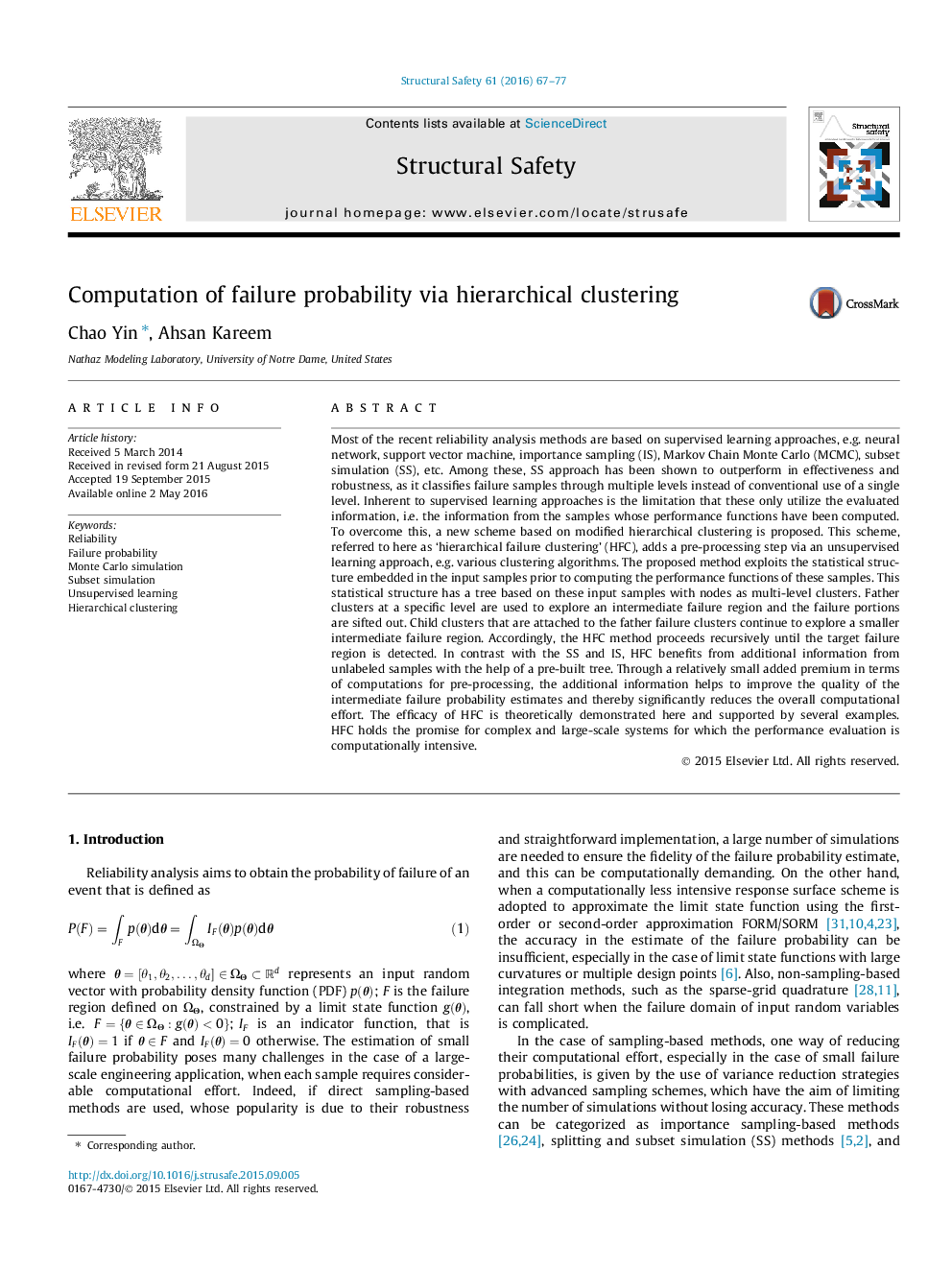| کد مقاله | کد نشریه | سال انتشار | مقاله انگلیسی | نسخه تمام متن |
|---|---|---|---|---|
| 307457 | 513363 | 2016 | 11 صفحه PDF | دانلود رایگان |
• Unsupervised learning with hierarchical clustering is used in reliability analysis.
• The proposed method can exploit useful information from unlabeled samples.
• The proposed scheme results in significant reduction in the number of simulations.
• Strategies for enhancing the quality of hierarchical clustering are studied.
• Theoretical background and the efficacy of the proposed method are provided.
Most of the recent reliability analysis methods are based on supervised learning approaches, e.g. neural network, support vector machine, importance sampling (IS), Markov Chain Monte Carlo (MCMC), subset simulation (SS), etc. Among these, SS approach has been shown to outperform in effectiveness and robustness, as it classifies failure samples through multiple levels instead of conventional use of a single level. Inherent to supervised learning approaches is the limitation that these only utilize the evaluated information, i.e. the information from the samples whose performance functions have been computed. To overcome this, a new scheme based on modified hierarchical clustering is proposed. This scheme, referred to here as ‘hierarchical failure clustering’ (HFC), adds a pre-processing step via an unsupervised learning approach, e.g. various clustering algorithms. The proposed method exploits the statistical structure embedded in the input samples prior to computing the performance functions of these samples. This statistical structure has a tree based on these input samples with nodes as multi-level clusters. Father clusters at a specific level are used to explore an intermediate failure region and the failure portions are sifted out. Child clusters that are attached to the father failure clusters continue to explore a smaller intermediate failure region. Accordingly, the HFC method proceeds recursively until the target failure region is detected. In contrast with the SS and IS, HFC benefits from additional information from unlabeled samples with the help of a pre-built tree. Through a relatively small added premium in terms of computations for pre-processing, the additional information helps to improve the quality of the intermediate failure probability estimates and thereby significantly reduces the overall computational effort. The efficacy of HFC is theoretically demonstrated here and supported by several examples. HFC holds the promise for complex and large-scale systems for which the performance evaluation is computationally intensive.
Journal: Structural Safety - Volume 61, July 2016, Pages 67–77
